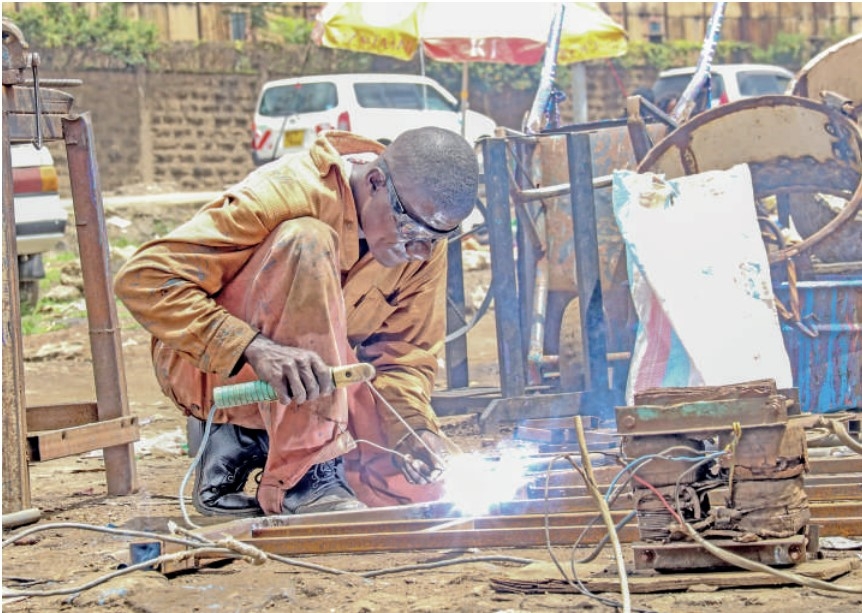Kenya is struggling to cut its heavy reliance on imported medicines and other pharmaceutical products.
Health Cabinet Secretary Susan Nakhumicha said imports, mostly from India, have grown and last year constituted 80 per cent of all products used locally.
Kenya has the biggest number of manufacturers in Comesa region, where they rule the market, but are unsteady at home.
Nakhumicha blamed Kenyans for doubting the quality of locally made human medicines and products.
"Yet some of our manufacturers have even been prequalified by the World Health Organisation because they make world standard products, for instance [Kilifi based] Revital Healthcare and Universal," she said.
However, manufacturers blame cost, saying they still have to import active pharmaceutical ingredients making their products expensive.
The industry in Kenya largely makes simple, non-patented products and mostly relies on technology transfer agreements with foreign manufacturers.
“Below 20 per cent of pharmaceutical products consumed in Kenya are manufactured locally. The problem is that most locally made products are not consumed locally but exported (to Comesa region),” Nakhumicha said.
“We have given instructions to Kenya Medical Supplies Authority to only import a product if it is not manufactured locally.”
The CS spoke after opening the ongoing 14th Kenya Medical Research Institute Annual Scientific and Health Conference.
She said Kenya spends at least $550 million per year to purchase pharmaceutical products abroad.
“This is money that could be ringfenced to support the economy if we buy locally. As we continue to buy local, our manufacturers will also tighten and improve quality,” Nakhumicha said..
Kenya Pharmaceutical Industry Diagnostic Report 2020 says export markets could drive the growth of Kenya’s pharmaceutical industry.
The report by the ministry says the target market for local exports of pharmaceutical products is Comesa, EAC and the rest of Africa.
“Kenya is currently only able to export an average of $63 million (9.8 billion) worth of products to these regional markets. A five per cent increase in Kenya’s share of this total African market would translate to exports worth $678 million [Sh106 billion],” the report says.
Kenya Medical Research Institute action CEO Elijah Songok said they aim to instill confidence in locally manufactured Health Products and Technologies.
“Our partnership with the Ministry of Health, local manufacturers, diverse health research institutions and the private sector aims to establish an ecosystem that fosters scientific and economic growth in Health Products and Technologies ,” he said.
In October last year, HPTs lead at the Ministry of Health Dr Tom Menge, said Kenya produces 132 HPTs within the country. These are mostly medicines and simple medical devices.
The four-day in Nairobi has been organised under the theme, 'Harnessing biomedical research innovations and big data for health system resilience, local manufacturing and commercialisation'.
Kash chairperson Dr Cecilia Mbae said the theme underscores the commitment by Kemri to advance healthcare through cutting-edge research and utilisation of transformative technology.
The conference stands as a cornerstone in Kemri's annual calendar of events.
The conference brings together researchers, local and international collaborators, stakeholders, partners and policy makers to share information.
"We are looking forward to a very busy conference and we are very happy to report that this year we received 364 abstracts. An improvement from last year's 253 abstracts," Mbae said.
The abstracts have been received from various countries outside Kenya including Uganda, Tanzania, US, Netherlands, Germany and Ghana.
They will be presented in 287 oral presentations and 77 poster presentations.
In addition, there will be 10 plenary talks from various scientists every morning addressing various issues in the areas of health research.
"In recognition of the significance of nurturing the young scientists, we have dedicated a session to young investigators, where we allow upcoming scientists training at various levels to be able to present their research findings among themselves in a very competitive way and will be recognized at the end of the conference," Mbae said.













